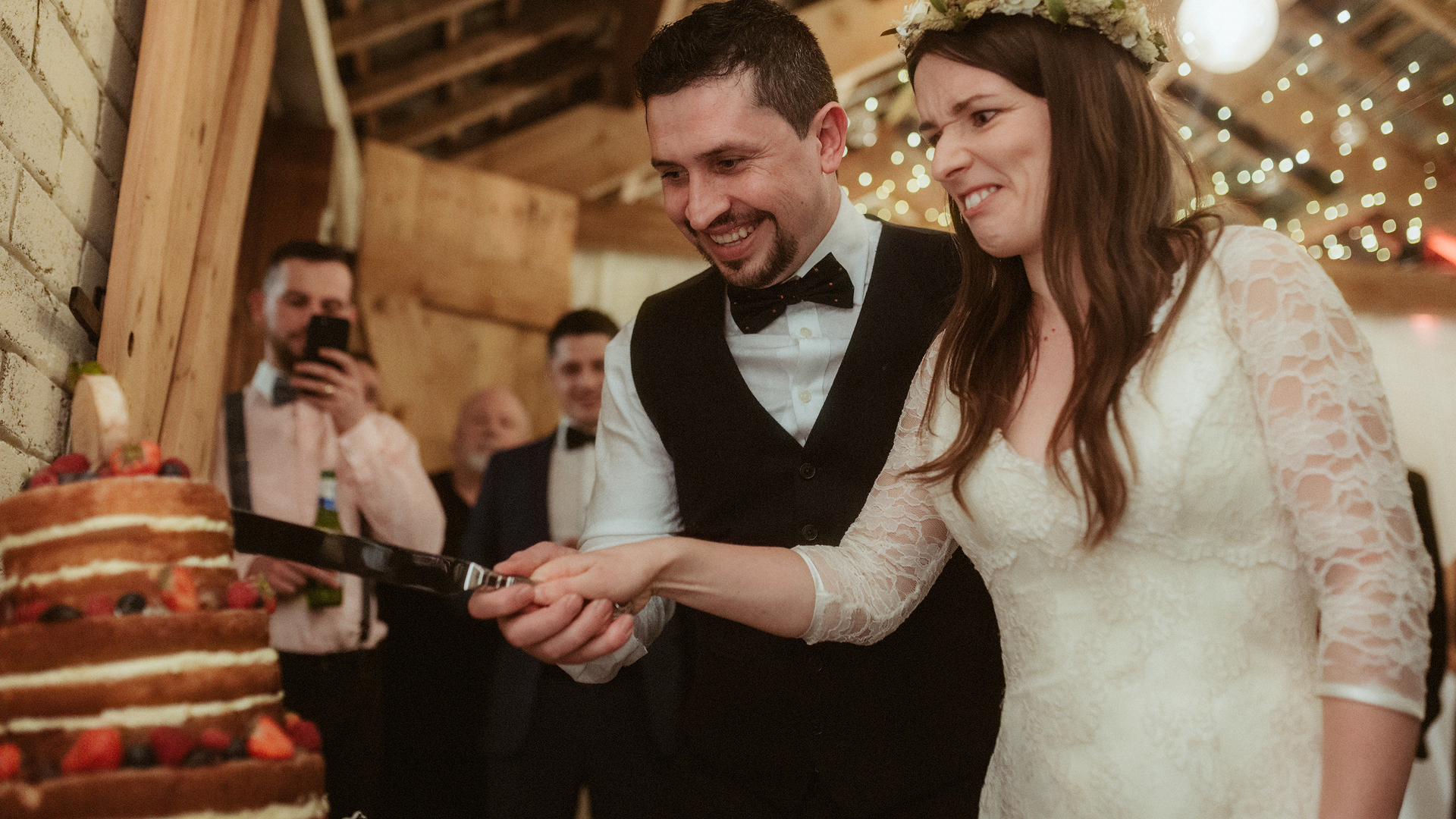Surviving the Sepia Bride Carnage: Raw Lessons from a Viral Nightmare for Every Photographer

The Sepia Bride Incident
Imagine pouring your soul into capturing a client's wedding day, creating images with your signature style, only to have your work ripped apart on social media by the very client who initially praised it. This nightmare became a reality in the recent Sepia Bride incident. Alexandra Conder, now infamously known as the Sepia Bride, took to TikTok to slam her wedding photos, sparking a viral storm of controversy.
Today, we'll dive headfirst into the Sepia Bride incident, a fiery clash between creative vision and client expectations that set the photography world abuzz. We'll explore the evolving dynamics between photographers and clients, share personal experiences, and incorporate wisdom from industry veteran Lisa Devlin to highlight the importance of communication and trust in our industry. For those of us who dare to defy the ordinary and capture the world through our unique lens, this newsletter will help us reflect on our practices and find ways to better manage client relationships and expectations.
Thanks for reading For The Hearts Still Beating! Subscribe for free to receive new posts and support my work.

Clash of Vision and Expectations
Alexandra Conder, now infamously known as the Sepia Bride, took to TikTok to express her dissatisfaction with her wedding photos. Her main gripe wasn't about the moments captured but the warm, sepia-toned editing that made her feel like a 'Simpsons character.' Despite initially raving about the photos, Alexandra's concerns grew over time, leading to a barrage of over 25 TikTok videos airing her grievances. This incident, which has sparked fiery debates within our industry, serves as a cautionary tale about the importance of managing client expectations and the potential risks of social media backlash.
The photographer, Hannah Wise, had shared her distinctive style through various galleries and communication channels, yet the situation spiraled out of control. Alexandra's main complaint centered on the post-production editing, leading her to request raw images, which Hannah eventually provided out of trust—something unheard of in our industry. This incident has sparked fiery debates, with some siding with the bride and others staunchly defending the photographer's artistic vision.
For an in-depth look at Hannah Wise's perspective, check out her exclusive interview on "The Vendor's Table" podcast. She discusses the incident, its impact on her business, and the crucial lessons learned.
Client Feedback: Grievances vs. Viral Fame
At first, I believed Alexandra's concerns deserved attention. As photographers, we are not just artists but also service providers. It's crucial to listen to our clients and address their issues. However, what unfolded was disheartening. Alexandra seemed to leverage the viral nature of her complaint for monetary gain. As news outlets picked up the story and her TikTok videos garnered views, it appeared her focus shifted from resolving the issue to capitalizing on her newfound fame through the TikTok Creator Program.
“Every critique is a chance to improve, and every praise is a testament to our hard work. Stay resilient, stay inspired.”
This relentless pursuit of attention and profit came at a significant cost, potentially destroying another person's small business. The situation highlights the darker side of social media, where the quest for viral fame can overshadow genuine grievances. It's a stark reminder of the power of social media to amplify voices, for better or worse.
Despite the challenges, remember that our dedication to our art and our clients can turn even the toughest situations around. Every critique is a chance to improve and every praise is a testament to our hard work. Stay resilient, stay inspired. Let's not be discouraged by the Sepia Bride incident, but rather use it as a stepping stone to improve our client relationships and our craft.
The Toll on Small Businesses
As a small business owner myself, I understand the fragility of our livelihoods. Negative publicity, especially when it goes viral, can be devastating. While large corporations might weather such storms with ease, small businesses often lack the same resilience. This incident underscores the need to consider the broader impact of our actions and words in the digital age.
Hannah Wise faced a tidal wave of criticism that threatened her reputation and business. It's a powerful reminder that behind every viral story is a real person whose life and livelihood are deeply affected. We've all been there, feeling the weight of our small business on our shoulders, knowing that one bad review could change everything.
Social Media’s Role in Controversy
Social media platforms bear significant responsibility in these scenarios. While they provide a valuable space for voices to be heard, they must also consider the implications of their algorithms that amplify controversy. Striking a balance between free expression and responsible amplification is both delicate and crucial.
However, we must acknowledge that these platforms are driven by capitalist motives, prioritizing profit over ethics. If generating ad revenue through increased views is fueled by controversy, it is upon us as individuals to rise above and not feed into the cycle of hatred. We have a collective responsibility to use these platforms mindfully and foster a more positive and constructive online environment. This starts with empathy and understanding in our client interactions, recognizing their concerns and working together to find solutions.
Balancing Vision and Expectations
This incident underscores the delicate balance we must strike between our artistic vision and client expectations. As photographers, we aim to create beautiful, meaningful work, but it's equally crucial to ensure our clients feel understood and valued. Clear communication and setting realistic expectations from the outset are essential in mitigating conflicts and fostering a positive experience for both parties. This approach will reassure our clients and prepare them for the process, making them feel understood and valued.

Lessons from the Sepia Bride Effect
As industry veteran and ever so cool Lisa Devlin aptly puts it, "Today's clients, influenced by selfies and filters, are hyper-aware of their appearance via phones. Conder keeps showing a professional photo next to what it looked like 'in reality,' which are photos from phones. We should be hired because our images don't look like they are from phones!"
This insight is a critical reminder that our clients' perceptions of themselves in their photos are deeply personal and significant. To navigate this landscape, consider these steps to protect your well-being and your business:
- Clear Contract Clauses: Include a clause that any issues must be reported in writing within 30 days of receiving the gallery. This sets a clear timeline for feedback and reduces the risk of drawn-out disputes.
- Re-edit Policies: Have a policy that allows for some re-edits to keep clients happy but charge for extensive changes. Editing out a fire exit sign is reasonable, but expecting perfect skin without makeup or putting clothes back on a toddler isn't something we should accommodate for free.
- Educate Your Clients: Explain the importance of professional makeup and other factors that affect their appearance in photos. This proactive communication can prevent unrealistic expectations.
- Detailed Pre-Shoot Discussions: Discuss editing preferences with your clients before the shoot. Understanding their vision and explaining your process can help avoid pitfalls like the Sepia Bride scenario.
By taking these proactive steps, we can better manage client relationships, maintain our artistic integrity, and ensure a positive experience for both parties. Remember, it's not just about capturing moments; it's about capturing moments the way our clients envision them. This approach empowers us to be in control of our work and the client relationship, while also instilling confidence and trust in our clients that we will deliver the best possible results.
Trust Your Gut: A Vital Lesson
A few years ago, I had a couple who, during our initial meeting, gave me a strange gut feeling. Despite my reservations, I booked them because they seemed thrilled with my work. This decision turned out to be a significant learning experience—albeit a painful one.
The wedding shoot itself went well, but the problems started after I delivered the photos. The couple bombarded me with complaints, comparing my photos to their guests' phone shots and questioning my choices. They even sent an Excel sheet with over 400 comments on the 600 photos I delivered. It was a nightmare. They delayed payments, made installments on their own terms without consulting me, and left me questioning my abilities.
At that point, just reading their names made me sick. It was a tough period that made me doubt my work, constantly fearing that future clients would be equally critical. I started second-guessing every decision, wondering if I'd get another 400-comment spreadsheet. The anxiety was real, and it cast a shadow over what should be a joyous profession. But it's not just about me. I believe they ruined their own wedding memories by focusing on the negatives. Every time they look at those photos now, they'll remember the conflict we had, which could have been avoided with better communication and trust in my initial instincts. They missed the point of having a photographer—to capture the essence and joy of their day, not to compete with phone photos for the bluest sky.
As Rob Gordon from 'High Fidelity' so eloquently put it, 'I've been listening to my gut since I was 14 years old, and frankly speaking, my gut has shit for brains.' Sometimes, though, your gut feeling is spot-on. I should have trusted that initial discomfort. Who knew your gut could be as unreliable as a weather forecast?
Now, I make it clear that I can't guarantee to photograph every person at the event, especially since my goal is to tell a story of the day, not shoot an inventory. Some people are uncomfortable being photographed, and I won't ruin their experience by forcing it.
I've also learned to set clear expectations from the beginning. I explain that while I strive to capture all the important moments and people, it's impossible to get everyone. My focus is on telling the story of the day, capturing the emotions and events as they unfold naturally. If someone avoids the camera, I respect their space. Clear communication has become my mantra, ensuring that clients understand my style and approach long before the wedding day.
This experience has reshaped my booking process. I now trust my gut instincts more than ever and make sure to have thorough conversations with potential clients. If something feels off, I don't ignore it. It's better to walk away from a potential booking than to endure another nightmare. The stress isn't worth it, and ultimately, it leads to better experiences for both me and my clients.
Reflect, Learn, Strengthen Relationships
The Sepia Bride incident has provided a valuable lesson for all of us in the photography industry. It has shown us the importance of maintaining open and honest communication with our clients, setting clear expectations, and staying true to our artistic vision while respecting our clients' desires. Remember, every challenge is an opportunity to grow and refine our craft. Let’s make our client relationships as strong as our images.
“Clear communication and setting realistic expectations from the outset are essential in mitigating conflicts and fostering a positive experience for both parties.”
Let's take this opportunity to reflect on our practices, learn from these experiences, and strengthen our relationships with our clients. Together, we can ensure that the memories we capture are cherished and valued for years to come.
If you found value in this newsletter, please share it with your fellow photographers and peers. Your support helps build a stronger, more connected community. For more insights and personalized guidance, explore my one-on-one mentorships and workshops designed to elevate your photography skills and client relationships.
Big hugs,
Björn

